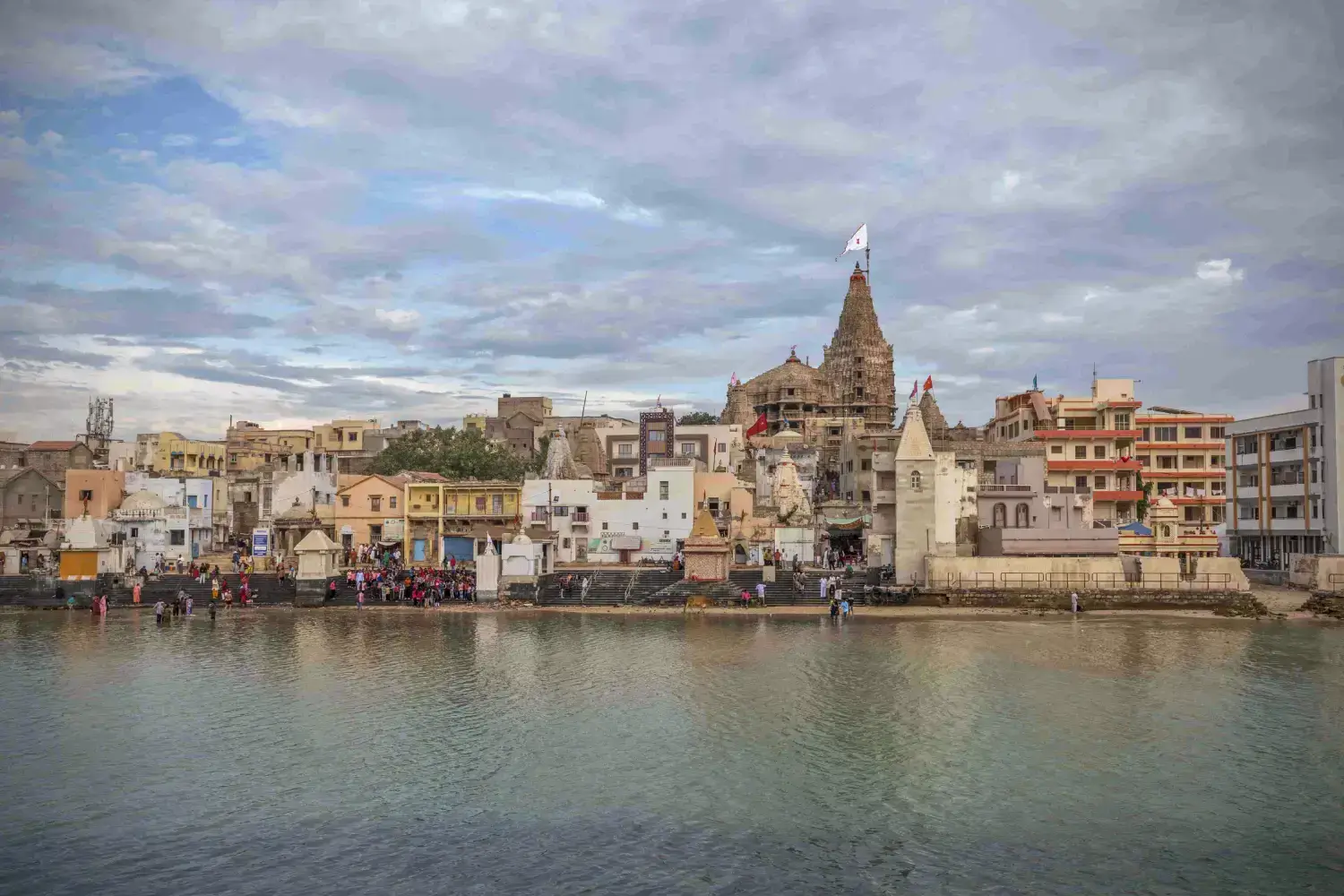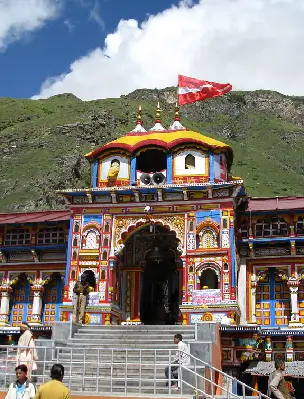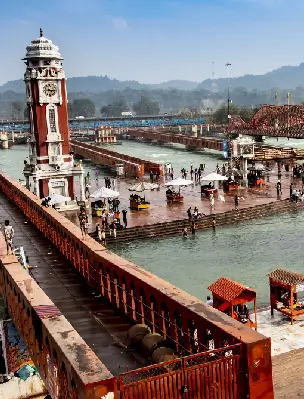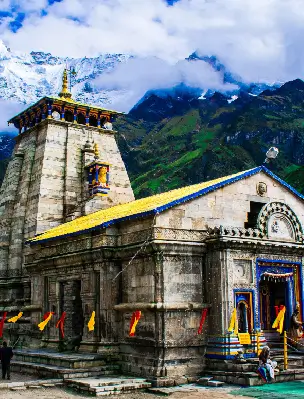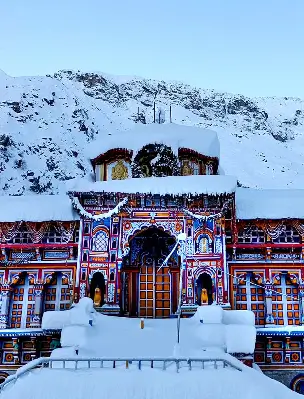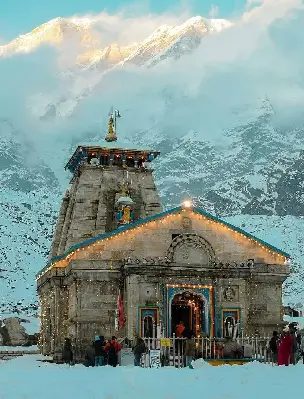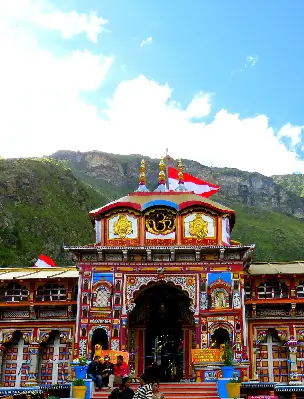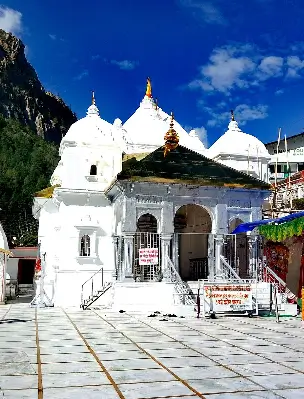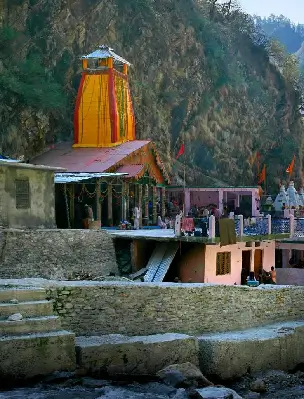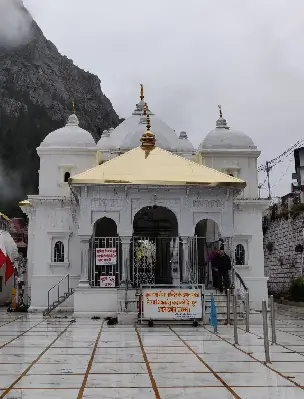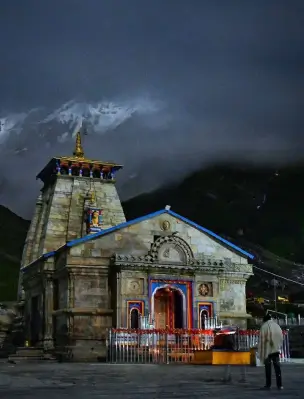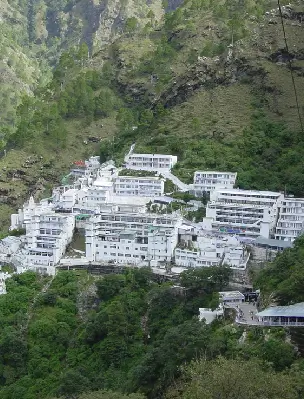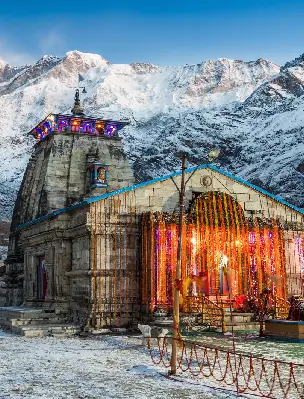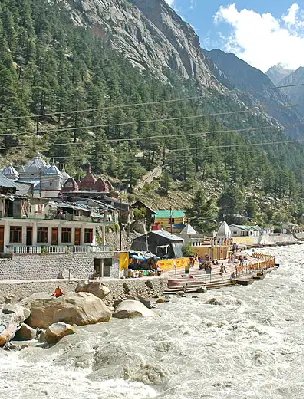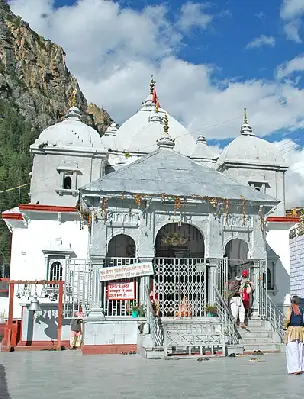Dwarka Tourism, Gujarat
The complete guide to Dwarka, the sacred city in Gujarat, famous for the Dwarkadhish Char Dham Temple. This guide provides comprehensive information on Dwarka tourism, its top tourist attractions, the history and significance of the Dwarkadhish Temple, the best time to visit, how to reach Dwarka, and other nearby destinations to explore.
The glorious city of Dwarka is an illuminating gemstone perched between the unfathomable sea and the widespread land. This ancient city has its roots deeply attached to the beautiful yet momentous mythologies of Hinduism. It is the orator of legends from thousands of years ago and a testimony to those stories itself.
Dwarka is believed to have been established by one of the major deities in the Hindu religion, Lord Krishna. Thus, Dwarka has a place in the hearts of the Vaishnavites. The city has one of the most glorious temples dedicated to Shri Krishna, the Dwarkadhish Temple. Dwarka is one of the four major religious sites, the Char Dham of India, and a gateway to a continuous stream of spirituality. The name Dwarka refers to the word "Dwar" which means a door; thus, considered the door to Moksha, which means salvation.
A pilgrimage to Dwarka is considered one of the most spiritual journeys in India and is believed to change demented minds into sanity.
Religious and Spiritual Significance of Dwarka

The legendary Dwarka city is not only a popular but equally significant religious destination in India. This ancient city is devoted to one of the most popular Indian divinities, Lord Krishna, the eighth incarnation of the Supreme God Vishnu.
Dwarka was the capital city of the Yaduvanshi empire, contemporary to the reign of Lord Krishna, who chose it as his residence. It was Lord Krishna himself who asked Lord Vishwakarma to build the city for the people of his kingdom. According to the scriptures, after killing his demonic uncle Kansa, Krishna started ruling in Mathura. But soon after, Kansa's father-in-law Jarasandha intended to avenge by waging war on Krishna. Though after his 16 recurring attacks, Jarasandh was always defeated, Mathura had to suffer the consequences of warfare. As a solution, Shri Krishna planned to retreat and re-establish this capital near the western coast, which was called Dwarka.
Dwarka city also has one of the four supreme religious abodes of Hinduism, the Dwarkadhish Temple. The four religious’ abodes, namely Puri in Odisha, Rameshwaram in Tamil Nadu, Dwarka in Gujarat, and Badrinath in Uttarakhand, are the most revered places in Hinduism and are referred to as the Char Dham. The Dwarkadhish temple is the third pilgrimage destination in this Char Dham journey.
It is Dwarka's spiritual prominence that it is one of the Sapt Puris (Seven spiritual cities) in India. Also, the underwater archaeological findings near Dwarka signify its prosperity during its haydays.
The Dwarkadhish Temple – The Main Attraction in Dwarka
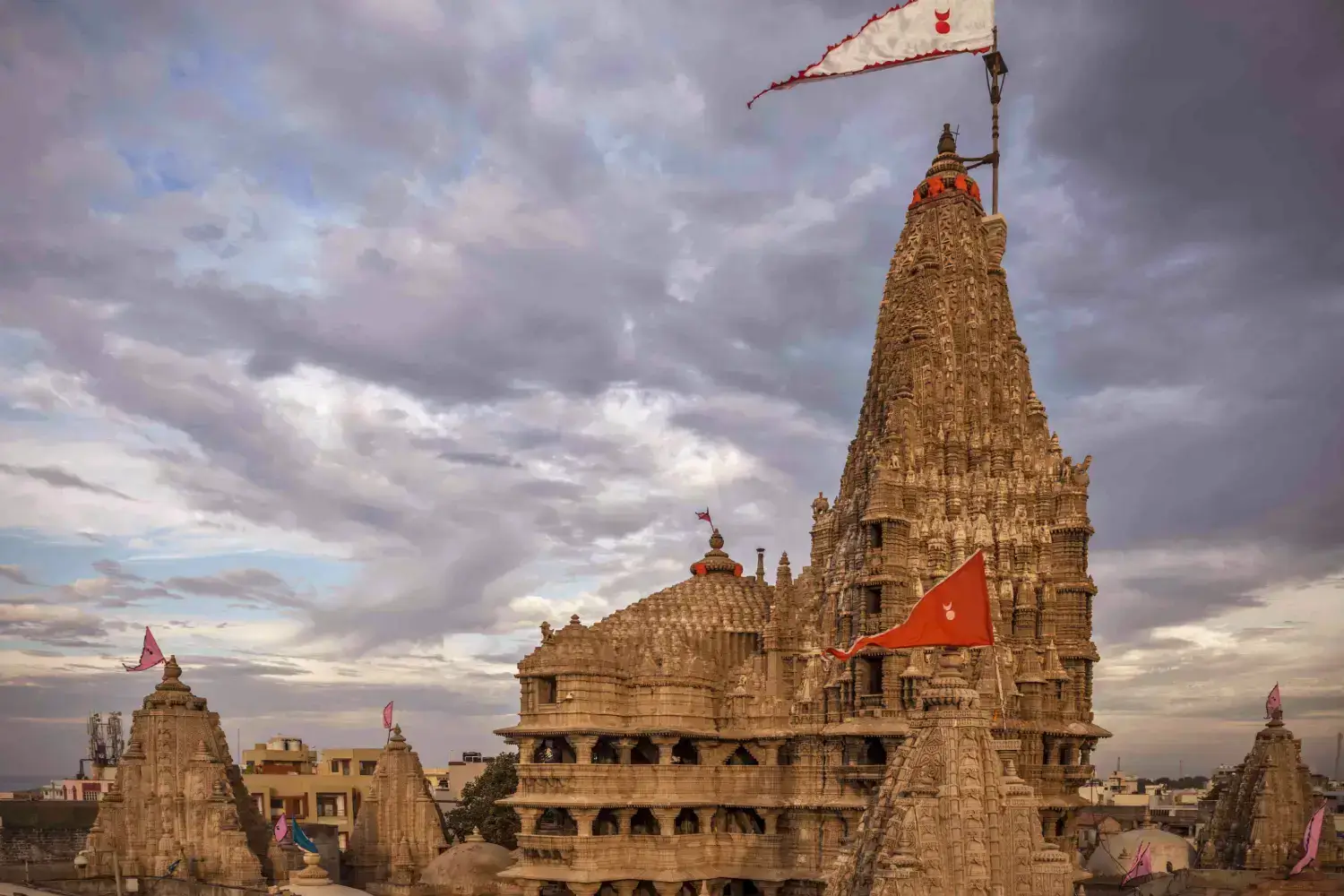
Dwarka perceives Krishna as their Lord, while Dwarkadhish Dham in Dwarka, Gujarat is considered Shri Krishna's abode. Perfectly located in a landscape backed by blue water, this temple looks like it has emerged from the Arabian Sea to look upon the entire Dwarka city and the devotees day and night.
The 2500 years old Dwarkadhish Temple is the most iconic religious destination in Dwarka and an important pilgrimage site for Vaishanavites. The presiding deity of the temple, Lord Krishna, is also called Dwarkadhish, which means the King of Dwarka.
Situated at the edge of the Gomti River, where the river meets the Arabian Sea, the majestic Dwarkadhish Temple sits testifying to the architectural brilliance of ancient India. This key religious site, built with much devotion and detailing, is protected by the Archaeological Survey of India.
History and Origin of Dwarkadhish Temple
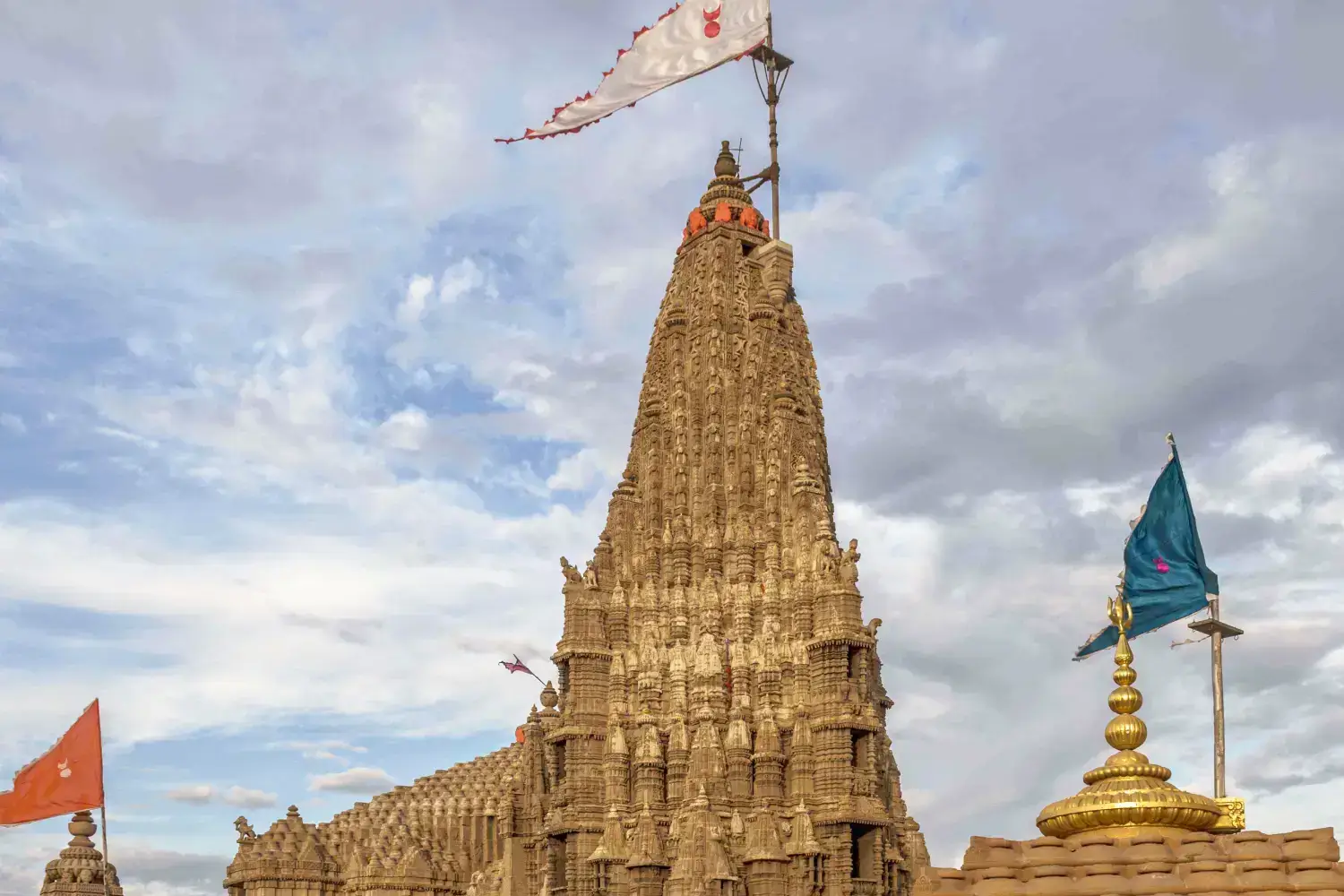
The earliest mention of Dwarka is in the ancient Indian epic, Mahabharat. In it, Dwarka was the kingdom of Yaduvansh, which was ruled by Lord Krishna. However, the Dwarkadhish Temple in Dwarka was built much later.
The first temple in Dwarka is believed to have been built by Vajranabha, Lord Krishna's great-grandson, somewhere between 5th to 2nd century BCE. He constructed the temple where Krishna's residence "Hari-Graha" used to be. Due to people's devotion to Lord Krishna, Dwarkadhish Temple received many contributions from various Kings subsequently.
In the 8th century, Vedic scholar Adi Shankaracharya declared Dwarkadhish Temple, the most pious temple in western India. Adi Shankaracharya chose one temple in each direction (East, west, north, and south) of India. Dwarkadhish was met with major destruction in the year 1472 by a Muslim leader named Sultan Mahmud Begada. The present temple was then rebuilt and enlarged in the 16th century in Chalukya architectural style. The present temple also had various additions.
Significance of Dwarkadhish Temple

The centre of Dwarka's Sanctity is the imposing Dwarkadhish Temple, also popularly known as the Dwarka Temple. Dwarkadhish Temple is revered in the city more than anything.
Dwarkadhish means the "Lord of Dwarka", which refers to Lord Krishna, who established and ruled Dwarka in the beginning. The significance of the Dwarkadhish Temple revolves all around Lord Krishna, who is considered the major and most venerated deity in Hinduism. Krishna chose Dwarka as a safe place for his people to thrive and grow. The temple is said to have been built just over the residence of Shri Krishna.
Adi Shankaracharya, an 8th century Hindu theologian, declared the Dwarkadhish Temple one of the four premier temples in the Hindu religion, which were collectively called Char Dhams. It is believed that whoever completes the visit to all of the four pilgrimage destinations, including Jagannath Temple in Puri, Ramanathaswamy Temple in Rameshwaram, Dwarkadhish Temple in Dwarka, and Badrinath Temple in Badrinath, is bound to attain moksha (Salvation) after their earthly life.
Dwarkadhish Temple is also the temple considered 108th Divya Desham of Shri Vishnu and has been mentioned in many religious scriptures and texts from the ancient Indian period. Various other interesting and godly tales about Dwarka add to the spiritual significance of the Dwarkadhish Temple.
Architecture of Shri Dwarkadhish Temple
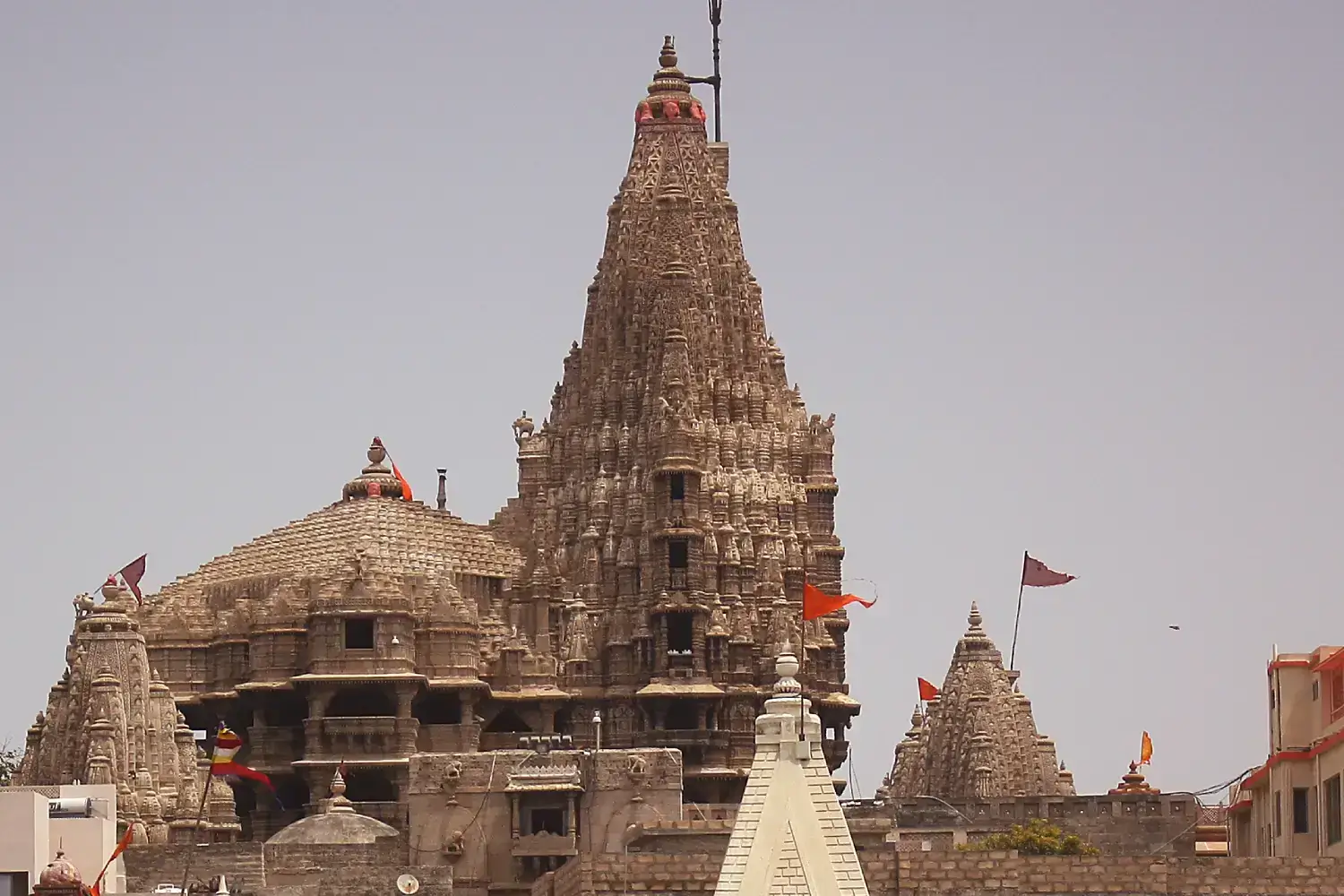
It is the architectural brilliance that you can see a stunning spire in Dwarka from miles away, and immediately know that it is the Dwarkadhish Temple. Dwarka Temple is shaped in this architecture after many additions, renovations, and reconstructions to its base structure by various Kings and devotees throughout the history of Dwarkadhish Temple.
Dwarkadhish Temple is built over a hillock and a staircase of more than 50 stairs runs down to the Gomti river in its south. The temple marks the place where Shri Krishna used to rest during his reign. Dwarkadhish Temple was built using limestone and sandstone in the Chalukya style of architecture. The temple features mainly a five-storey mandapam (front hall), a garbhagriha (sanctum sanctorum), and a shikhara (spire) over the garbhagriha. It is supported by 72 intricately carved monolith pillars. The pillars, walls, and roof are carved out portraying kaleidoscopic patterns and various deities.
The Garbhagriha has the main idol of Lord Krishna made from the black stone called Shaligram, which represents Lord Vishnu in Hindu mythology. Over the garbhagriha is the most spectacular component of the temple, the Shikhara. The beautifully carved curvilinear Shikhara stands as a symbol of evidence of all the legends about Dwarka. Atop the Shikhara, hoists the 40 square metre Dhwaja (Flag) which recites the glorious stories of the past. It is a triangular-shaped flag with symbols of the sun and moon on it. The symbols represent the eternal presence of Dwarka's reverence in the world. Interestingly, the flag is replaced with a new one three to five times a day, every one of which is donated by devotees. The flag-changing ceremony is a flabbergasting event and is witnessed by many.
The Dwarkadhish Temple complex also houses shrines dedicated to Lord Balaram, Devi Subhadra, Revati, Vasundhara, Rukmini, and other deities. Dwarkadhish has entry gates on its northern and southern sides. The entry on the north is known as the Moksha Dwar which translates to "door to salvation" while the one on the southern side is called Swarg Dwar, "door to heaven". Swarg Dwar faces the Gomti River and has about 56 steps running down to the river. On the Moksha Dwar, there is one of the four prime learning centres, Sharda Peetha, established by Adi Shankaracharya in the 8th Century.
Best Time to Visit Dwarka, Gujarat

November to February is the best time to visit Dwarka, as the climate is relatively cool and comfortable. Winters are moderately cold in Dwarka with temperature ranging from 9 to 34 Celsius. You will see a clear sky and a little breeze blowing. This weather is perfect for visiting the different historical and religious sites. Moreover, November is also the peak season for Dwarkadhish yatra.
From March to June, temperatures range between 23°C and 42°C, making it difficult to participate in outdoor activities. You can try wearing light and breathable clothing, using a portable fan or air conditioning, and avoiding prolonged exposure to the sun.
The monsoon season begins in June, making the atmosphere humid and uncomfortable. Be sure to pack appropriate rain gear.
How to Reach Dwarka in Gujarat?
By Air: The nearest airport to Dwarka is Jamnagar Airport, which is about 137 kilometres and takes about three hours. Jamnagar Airport has frequent flights from major cities like Mumbai and Ahmedabad, and taxi services are available to Dwarka from the airport.
By Train: Dwarka has its own railway station which has trains from many major cities, including Ahmedabad, Delhi, Mumbai, Kolkata, and Bengaluru.
By Road: Dwarka is also well connected by road, with regular buses running from many cities in Gujarat, including Ahmedabad, Porbandar, Rajkot, Vadodara, and Amerli.
Other Popular Attractions to Visit in and around Dwarka

- Bhadkeshwar Mahadev Temple
- Rukmini Devi Temple
- Bet Dwarka
- Nageshwar Jyotirlinga Temple
- Dwarka Beach & Swami Narayan Mandir
Dwarka Beach & Swami Narayan Mandir
The Dwarka beach, located near the Dwarkadhish Temple, is a great spot to witness the confluence of spirituality and natural beauty. This place is considered to be the actual location of this mythological event of Lord Krishna establishing his empire in Dwarka. Dwarka Beach is a popular point of interest in Dwarka among pilgrims and tourists for having a time amidst peace. The Dwarkadhish Temple is located just a few hundred metres from the beach which gives a pious touch to the place. The beach is also a great location for sitting and reflecting on oneself and should not be missed especially for those who would like to combine history, spirituality and the sound of the waves.
Bhadkeshwar Mahadev Temple
Bhadkeshwar Mahadev Temple is located at the western edge of Dwarka and surrounded by Arabian sea. A visit to Bhadkeshwar Mahadev is not just spiritually achieving but takes you to a beautiful landscape where the massive waterbody coexists on the canvas.
This temple is astonishingly 5,000 years old and houses a self-manifested Swayambhu Shivling. There are many other unique features which makes it one of the famous temples in Gujarat.
The Bhadkeshwar Mahadev Temple meets an interesting event yearly when the water level rises. Many believe that the sea itself performs the sacred Jalabhishek (water offering) ritual during this time. Also, the grand fare organised during Mahashivratri (February-March) on the coastline around the Bhadkeshwar Mahadev Temple makes the sight flamboyant.
Rukmini Devi Temple
Two kilometres from Dwarkadheesh Temple is the temple dedicated to Dwarakadhish's wife, Devi Rukmini. It is one of the most obliged religious places to visit in Dwarka after Dwarkadhish Temple. There are various interesting legends as to why this temple is present on the outskirts but not near the Dwarka Temple.
The Rukmini Devi Temple is believed to be more than 2,000 years old but few of its sections are considered to be added later in the 12th century. The temple is modest to the Dwarkadhish temple yet similar in appearance and devotional fervour. The main deity presides in the sanctum while many other gods and deities are sculpted on the exteriors of the temple.
Bet Dwarka
Bet Dwarka or Bet Shankhodara is a religious site that is considered to be the original home of Lord Krishna during his kingdom. As per the mythology, after the demise of Lord Krishna, most of the area of Bet Dwarka was drowned in the sea. The part left turned into an island off the coast of Dwarka surrounded by the Gulf of Kutch.
Bet Dwarka(Beyt Dwarka) is called Shankhodhar because conch shells are found in abundance here. Excavation projects in Bet Dwarka and its underwater surroundings unearthed the remnants from the time of the Harappan civilization and the Mauryan empire. Some of the artifacts include; earthen pots, a 580-metre protection wall, 1500 BC, inscription on a seal, jar, copper fish hook, and coppersmith’s mould. These findings indicate that the mythical story that people have about Bet Dwarka may not be completely false. Thus, it is one of the best places to visit near Dwarka for spiritual and history buffs.
To get to Beyt Dwarka one has to cross the Sudarshan bridge which is the longest cable-supported bridge in India. This 2.3-kilometre-long bridge has quotes from Bhagavad Geeta and images of Lord Krishna on both sides. The name Sudarshan refers to the divine discus weapon of Lord Vishnu.
Nageshwar Jyotirlinga Temple
Nageshwar Jyotirlinga Temple is one of the twelve Jyotirlinga shrines of Lord Shiva. It is located about 16 kilometres from Dwarkadhish Temple and associated with the ancient city of Dwarka which is considered as the legendary city of Lord Krishna. The current structure of the temple is considered to be built at the same place as the ancient temple which was hundreds of years old. The temple is home to the sacred Nageshwar Jyotirlinga that is believed to be the earthly abode of Lord Shiva’s spiritual power. It acts as a protective armour against poison, especially that which is given by snakes. The name of the temple is Nageshwar which means the Cobra, the sovereign serpent which is coiled around the neck of Lord Shiva. It is considered that Lord Shiva appeared as a Jyotirlinga, “Daarukaavana Nageshwar,” at the temple to save the world from evil and bring balance in the world.
You Might Also Like to Read
- The History of Kumbh Mela
- Chardham Yatra Offline Registration
- Tungnath Temple Opening & Closing Dates
- 12 Jyotirlinga Temples in India
- Madmaheshwar Temple Opening & Closing
- Badrinath & Hemkund Sahib Helicopter Yatra Services
- Kedarnath Yatra Helicopter Booking Guide
- Online/Offline Registration information for Chardham Yatra
- Char Dham Yatra by Helicopter
- Top Things to Carry with Chardham Yatra
- Best Places to Visit in Uttarakhand
- Best Places to Stay in Badrinath
- Best Places to Stay in Kedarnath
- Rudranath Temple Opening & Closing
- Online Puja Booking at Badrinath & Kedarnath Temple
- Places to Visit Near Badrinath Dham
- Akshaya Tritiya Festival Information
- Best Places to Explore Enroute Kedarnath Dham Yatra
- Ranikhet Tourism- Top Places to Explore & Things to Do
- Kalimath Temple Information
- History of Shri Kedarnath Temple
- Badrinath Temple History
- Gangotri Temple History
- Best Places to Visit in Puri Odisha
- Popular Religious & Spiritual Cities to Visit in India
- History of Yamunotri Temple
- Best Treks in Uttarakhand to Explore During the Chardham Yatra
- Dwarka Tourism – Dwarkadhish Temple Gujarat
Popular Tours
Book The Tour
Char Dham Temples
Hotels in Chardham Circuit
Char Dham Tour Packages
- Char Dham Yatra From Delhi
- Chardham Yatra From Mumbai
- Char Dham Yatra From Ahmedabad
- Chardham Tour with Hemkund Sahib
- Chardham Yatra by Helicopter
- Char Dham Yatra with Vaishno Devi & Amritsar
- Chardham Tour with Gomukh Trek
- Char Dham Packages From Bangalore
- Chardham Yatra From Chandigarh
- Char Dham Yatra with Auli
- Char Dham Yatra From Hyderabad
- Char Dham Yatra with Vaishno Devi, Jwalaji & Amritsar
- Char Dham Yatra From Chennai
- Chardham Packages From Bhopal
- Char Dham Yatra by Luxury Vehicle
- Char Dham Yatra with Satopanth Lake
- Char Dham Yatra with Panch Badri Tour
- Char Dham with Valley of Flowers
- Chardham Yatra with Mahavatar Baba and Nainital Tour
Do Dham Yatra
- Badrinath Kedarnath Yatra From Haridwar
- Badrinath Kedarnath Yatra
- Gangotri Yamunotri Yatra
- Gangotri Yamunotri Yatra from Haridwar
- Kedarnath Badrinath Yatra with Hemkund Sahib
- Kedarnath Badrinath Yatra with Valley of Flowers
- Kedarnath, Badrinathdham With Lake Of Nainital
- Yamunotri, Gangotri with Lake of Nainital
Ek Dham Yatra
- Badrinath Pilgrimage Tour
- Kedarnath Pilgrimage Tour
- Gangotri Pilgrimage Tour
- Yamunotri Pilgrimage Tour
- Kedarnath Yatra By Helicopter
- Badrinath Dham Yatra from Haridwar
- Badrinath Yatra with Hemkund Sahib
- Badrinath Yatra with Valley of Flowers
- Gangotri Dham Yatra with Gaumukh
- Kedarnath Dham Vasuki Tal Trek
